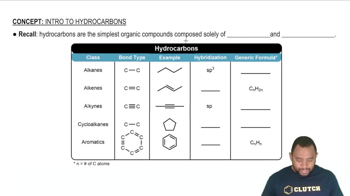Avobenzone is a common ingredient in sunscreen. Its structural formula is shown.
a. What functional groups are in avobenzone?
 Verified step by step guidance
Verified step by step guidance



 2:14m
2:14mMaster Hydrocarbons Concept 1 with a bite sized video explanation from Jules
Start learning